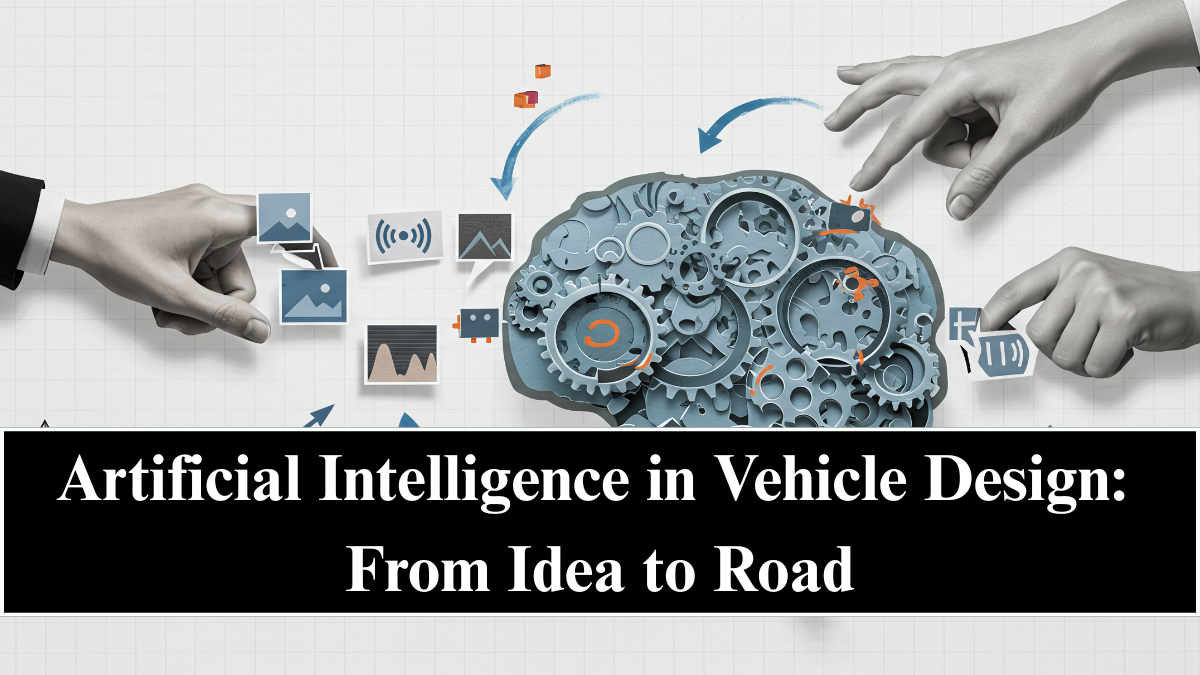In 2025, Artificial Intelligence (AI) has become the creative engine behind automotive design. What once took years of engineering and testing can now be accomplished in months, thanks to AI-powered modeling, generative design algorithms, and digital twin simulations. Automakers are using machine learning not only to enhance efficiency and performance but to completely reimagine how vehicles are conceptualized, tested, and manufactured.
From futuristic EVs to aerodynamic supercars, AI is redefining every phase of automotive creation—from the first sketch to the final road test.

How AI Is Revolutionizing Vehicle Design
Traditionally, car design involved manual prototyping, repeated testing, and human-driven decision-making. In 2025, AI has taken over these time-consuming steps with systems capable of learning, adapting, and generating design solutions autonomously.
Key stages where AI is now deeply integrated include:
-
Concept generation: Generative AI models analyze millions of existing designs to create new, optimized blueprints.
-
Structural simulation: Algorithms test materials, shapes, and aerodynamics digitally before physical prototypes are built.
-
Functional optimization: AI fine-tunes powertrain layouts, cooling systems, and safety structures for peak efficiency.
-
Aesthetic refinement: Neural networks evaluate consumer preferences and trends to produce appealing exteriors and interiors.
This integration of data-driven creativity and engineering precision has accelerated the design cycle like never before.
The Power of Generative Design
Generative design—an AI-driven process where algorithms automatically generate multiple design alternatives based on defined constraints—has become the backbone of vehicle innovation in 2025.
Using machine learning and high-performance computing, automakers feed parameters like:
-
Weight targets
-
Aerodynamic efficiency
-
Material constraints
-
Cost limitations
-
Sustainability goals
AI then produces thousands of potential solutions, each optimized for performance and manufacturability. Engineers can choose the best model or combine aspects of several to create the most balanced, efficient, and futuristic designs.
Brands like BMW, Tesla, and Hyundai are using generative design to craft components such as lightweight chassis frames, battery enclosures, and seat structures—reducing weight by up to 30% without compromising strength.
Digital Twins: The Virtual Test Ground
Another major breakthrough in 2025 is the use of digital twin technology—a virtual replica of a vehicle that mirrors real-world performance in a simulated environment.
These AI-powered twins allow automakers to:
-
Predict how vehicles will perform under real driving conditions.
-
Test safety systems and crash behavior virtually.
-
Optimize battery management and thermal control in EVs.
-
Continuously refine models through real-time feedback from on-road data.
This has drastically reduced the number of physical prototypes needed, saving time, money, and materials. Automakers now conduct 90% of pre-production testing in digital environments, cutting development timelines by nearly 50%.
Human-AI Collaboration in Design Studios
AI hasn’t replaced designers—it has empowered them. In 2025, vehicle design studios are hybrid spaces where human creativity meets machine precision. Designers use AI copilots to refine sketches, test shapes in real time, and simulate ergonomics within virtual environments.
This collaboration has led to more inclusive and diverse vehicle concepts, taking into account:
-
Driver posture analytics for comfort optimization.
-
Regional design preferences using consumer data.
-
Sustainability-driven materials such as bio-composites and recycled polymers.
In this symbiotic relationship, humans provide imagination, while AI ensures feasibility and optimization.
AI-Driven Manufacturing and Quality Control
Beyond design, AI extends into manufacturing and production. Smart robots now assemble cars using machine learning algorithms that adjust torque, precision, and alignment in real time. Computer vision systems monitor assembly lines to detect micro-defects that human eyes might miss.
Key manufacturing innovations include:
-
Predictive maintenance for factory equipment.
-
AI-driven supply chain management to minimize delays.
-
Energy-efficient production lines optimized by real-time data analytics.
-
Material traceability systems ensuring quality and compliance.
Together, these advancements create a seamless flow from digital blueprint to physical vehicle, ensuring that every model meets the highest standards of safety, aesthetics, and sustainability.
Sustainability Through Smart Design
AI’s contribution to sustainability is one of its most impactful achievements. Modern vehicle designs are now focused on eco-efficiency, combining lightweight materials, modular components, and recyclable parts.
AI models help reduce waste by:
-
Simulating energy use across the production cycle.
-
Optimizing materials for circular reuse.
-
Designing components that are easy to disassemble and recycle.
-
Reducing prototype waste through virtual testing.
This has made AI a crucial partner in achieving global net-zero goals in the automotive industry.
The Future of AI in Vehicle Design
By 2030, AI is expected to fully automate large portions of design and testing, with minimal human intervention required. Vehicles will be co-created by AI systems capable of emotional intelligence, understanding both functional and aesthetic desires of consumers.
Upcoming trends include:
-
Generative interiors that adapt design based on user emotion.
-
AI-based personalization, letting buyers co-design cars in virtual showrooms.
-
Quantum computing integration for even faster simulations.
-
Fully autonomous design ecosystems, linking concept, production, and marketing through shared AI systems.
The convergence of AI, 3D printing, and robotics will ensure that every future car is optimized for comfort, performance, and sustainability before it even hits the road.
FAQs
How is AI used in vehicle design in 2025?
AI is used for concept generation, simulation, material optimization, and digital twin modeling, speeding up design and improving efficiency.
What is generative design in the automotive industry?
It’s an AI-based process where algorithms automatically create multiple design variations optimized for performance and cost.
What are digital twins in car design?
Digital twins are virtual replicas of vehicles that simulate real-world conditions, helping engineers test and refine performance digitally.
How does AI improve vehicle sustainability?
AI optimizes materials, aerodynamics, and production efficiency, reducing waste and energy consumption throughout the vehicle’s lifecycle.
What’s the future of AI in automotive design?
Future vehicles will be co-created by AI and humans, with dynamic personalization, sustainable materials, and real-time simulation at every step.
Click here to know more.
